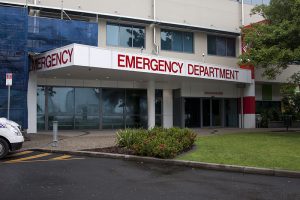 If an elderly San Diego County resident who has sustained injuries as a result of nursing home abuse ends up in an emergency department, will he or she be properly diagnosed with injuries caused by elder abuse? According to a recent article in Psych Central, formal diagnoses of elder abuse are made in only one out of every 7,700 visits to emergency rooms across the country. This information comes from a new study conducted by researchers at the University of North Carolina at Chapel Hill, the University of California San Diego, and Weil Cornell Medicine.
If an elderly San Diego County resident who has sustained injuries as a result of nursing home abuse ends up in an emergency department, will he or she be properly diagnosed with injuries caused by elder abuse? According to a recent article in Psych Central, formal diagnoses of elder abuse are made in only one out of every 7,700 visits to emergency rooms across the country. This information comes from a new study conducted by researchers at the University of North Carolina at Chapel Hill, the University of California San Diego, and Weil Cornell Medicine.
Given what we know about rates of elder neglect and nursing home abuse—a fact sheet from the National Council on Aging (NCOA) predicts that about 10% of all Americans aged 60 and older have been subject to some form of elder abuse—the notion that only about .01% of seniors who seek treatment in emergency departments are diagnosed with injuries caused by elder abuse seems startling. What else does this study teach us, and what can we do to help?
Majority of Elder Abuse Cases are Not Reported or Go Undiagnosed
The primary piece of information that we can glean from the new study, which was published in the Journal of the American Geriatrics Society, is that “many cases of elder abuse either are not recognized and/or not reported.” Every year, more than 23 million older adults seek treatment in emergency departments across the country. As such, these spaces are particularly important ones for recognizing and reporting signs and symptoms of elder abuse.
According to Timothy Platts-Mills, a senior author of the study who is also an assistant professor of emergency medicine at UNC School of Medicine, “these findings indicate that the vast majority of victims of elder abuse pass through the emergency department without the problem being identified.” For most medical professionals, the study reveals a “major missed opportunity” to help seniors who are being victimized by caregivers and facilities. Given that nursing home abuse can result in severe injuries and can have long-term repercussions, it is extremely important for healthcare professionals in emergency departments to receive proper training for recognizing signs of elder abuse and neglect, and knowing how to properly report it.
Difficulty Identifying Elder Abuse in Emergency Departments
One of the big problems, according to Platts-Mills, is that elder abuse often is difficult to identify among patients who arrive at emergency department. Many seniors, given their physical frailty and other healthcare issues, can appear at the hospital with bruises or other injuries. Yet it can be “very difficult distinguishing whether a bruise is from a fall or physical abuse,” explains Platts-Mills, “or whether poor hygiene is a result of a patient asking to be left alone or the result of overt neglect on the part of a care provider.”
As California’s population, as well as the U.S. population generally, continues to age, emergency departments are seeing more seniors on a regular basis. Right now, the study indicates that most healthcare professionals in emergency departments only ask one question about patient safety during intake. The study suggests that hospitals should institute a policy whereby healthcare workers ask a series of questions that can better reveal whether a patient may be the victim of nursing home abuse or neglect.
If you have questions or concerns about an elderly loved one, a dedicated San Diego County nursing home abuse lawyer can discuss your options with you. Contact the Walton Law Firm today.
See Related Blog Posts:
Using a “Forensic Lens” in San Diego Nursing Home Abuse Cases
Nursing Home Negligence and Substance Abuse
(image courtesy of Mondberg)
 Southern California Nursing Home Abuse Lawyer Blog
Southern California Nursing Home Abuse Lawyer Blog








